VINALHAVEN — No stranger goes unnoticed on Vinalhaven, so when an FBI agent and private investigator started crawling around the island last week, asking questions about Robert Indiana and art fraud, the whispers began.

Chuck Clapham rides past Robert Indiana’s Vinalhaven home, a former Odd Fellows Hall known as the Star of Hope, which has fallen into disrepair. Indiana’s death on May 19 put the spotlight back on the island, where his relationship with residents was also in poor condition.
Indiana had divided this community with what one neighbor described as “an odious presence” for 40 years. The acclaimed artist’s death on May 19 at age 89 hasn’t cleared the air, and if anything has opened a further festering divide and draped the island in mystery, intrigue and unwanted drama.
On Tuesday, less than 72 hours after Indiana’s death, an agent with the Federal Bureau of Investigation was on the island exploring the possibility that art made under Indiana’s name near the end of his life was created fraudulently by men who are accused in a federal lawsuit of isolating Indiana from his longtime friends and professional associates and exploiting his name and legacy by creating fakes and selling them for millions of dollars. The FBI was following up on allegations contained in the lawsuit, which was filed by an offshore art foundation that claims it has represented Indiana since the 1990s.
That same FBI agent ordered an autopsy on Indiana’s body Tuesday, according to a local law enforcement official and a second person involved in the case. The state Office of Chief Medical Examiner confirmed that it performed an autopsy Tuesday, but a cause of death is not expected to be issued until after the Memorial Day holiday.
A spokeswoman for the FBI in Boston declined to confirm whether it is investigating anything surrounding Indiana’s death, which his attorney had said was caused by respiratory failure.
PRIVATE INVESTIGATOR JOINS THE MIX
The agent startled Sean Hillgrove at home Tuesday night when he knocked at his entryway. “He just showed up and asked if I had a little bit of time,” said Hillgrove, a former assistant to Indiana. “But I don’t believe I had the option.”
Seated at the kitchen table of a modest home that Indiana purchased for him several years ago, Hillgrove called the experience “scary and intimidating.” The agent asked many personal questions about Indiana’s lifestyle and Hillgrove’s relationship with him, but Hillgrove said he believed the FBI was mostly interested in art fraud.
“He kept asking about the art that was being sold and if I knew anything about it or who was participating in it. He was very thorough,” Hillgrove said, declining to say how he answered the agent, allowing only, “I think I have a pretty good idea about what’s going on.”
There was more drama Wednesday, when a private investigator from Portland showed up to serve the lawsuit on Jamie L. Thomas, a caretaker of Indiana’s and one of the islanders named in the suit. The investigator staked out Thomas’ home all morning, then knocked on his door a little after 11 to serve him.

Sean Hillgrove, a former studio assistant of Robert Indiana, lives in a home behind Indiana’s, which can be seen in the background.
On Friday, the investigator returned to Vinalhaven to serve Michael McKenzie, a New York publisher and part-time islander who worked with Indiana for more than a decade, and also is named in the suit.
The lawsuit, filed the day before Indiana’s death, charges him and two island associates with copyright infringement related to art fraud and lays bare years of rumor and innuendo. The Morgan Art Foundation, an offshore company, claims in the lawsuit that it owns the copyright for Indiana’s signature “LOVE” image with a tilted, italic “O” and similar works. The suit says that recent pieces produced by Indiana violate the foundation’s copyright.
FORCED INTO ISOLATION, SUIT SAYS
Indiana was a self-described sign painter from the Midwest, born Robert Clark in New Castle, Indiana. After a summer at the Skowhegan School of Painting & Sculpture, he found his stride in New York, combining the verbiage of signs with the graphic sensibilities of slogans to create a new visual language that sustained his career for more than half a century. He moved to Vinalhaven in 1978.
“LOVE” was always a bitter pill for Indiana. He never trademarked the image, and lost millions of dollars because of it. The lawsuit and FBI investigation further cloud the reputation of Indiana and sully the end of an art career that began in the 1950s and included some of the most recognizable graphic images in American art.

A steel version of Robert Indiana’s “HOPE” sculpture is displayed outside his home in 2014 on Vinalhaven. Associated Press/Robert F. Bukaty
Indiana’s death also closes a chapter on the life of a longtime island resident who was never fully embraced by the locals and didn’t seem to care if he was or wasn’t. His relationship with the island, and with Maine, was fraught with tension, stemming in part from his aloofness, and also from his arrest many years ago on charges that he molested a young boy on the island. Indiana was acquitted of those charges by a Knox County jury in 1992, but the allegation followed him to his death.
Indiana was openly gay, and like a lot of men of his generation he didn’t flaunt his sexuality. But neither could he escape it on Vinalhaven. In the end, friends said, Indiana found exactly what he wanted most on Vinalhaven, which was a desire to be left alone.
And with his death, now into the open come all of the questions and conversations that have been whispered in the past, along with a host of new conversations concerning the final few months of Indiana’s life.
The lawsuit contends that Thomas, a well-respected and jack-of-all-trades islander who acts in community theater, forced Indiana into isolation, screened his emails and phone calls, and turned away visitors. Islanders say that’s preposterous, and have rallied to Thomas’ defense.
If forced to take sides, “I think I vote for a Maine fisherman before any art dealer or lawyer, especially in this situation,” said Chris Crosman of Thomaston, who is director emeritus of the Farnsworth Art Museum and founding chief curator of the Crystal Bridges Museum of American Art in Bentonville, Arkansas.
He knew Indiana through his association with the Farnsworth, and said it was entirely believable that Indiana wanted isolation and that Thomas was doing exactly what Indiana paid him to do.
“Jamie and his wife did take care of Bob’s day-to-day physical needs, including protecting him from folks Bob had no wish to see. Part of that was pure vanity,” Crosman wrote in an email. “Bob was fastidious about his appearance, and I suspect he would not have wanted old friends to see him in decline. If a Vinalhaven fisherman ends up with a share of Bob’s estate, I also suspect that is exactly what Bob would have wanted. He trusted almost no one, except a few Maine fishermen who he viewed as authentic and honorable, especially given numberless betrayals – in his mind, at least – by the art world.”

Workers remove an 8-foot-tall steel “seven” sculpture by Robert Indiana from its packing crate for its installation at the Portland Museum of Art. Staff photo by John Patriquin
Thomas does indeed end up with the estate, indirectly. According to Indiana’s will, filed Friday in Knox County Probate Court in Rockland, the artist’s longtime home, the behemoth former Odd Fellows Hall known as the Star of Hope, will be turned into a museum, and his entire estate, estimated at $28 million, will support a nonprofit organization that will run the museum. The will stipulates that Thomas will serve as the nonprofit’s executive director. The will is dated May 2016, which is around the same time Indiana gave Thomas power of attorney, according to the federal lawsuit.
A lawyer for the Morgan Art Foundation said it would contest the will. Thomas has not spoken on the record about the allegations, and attempts to reach him were unsuccessful.
ELDER ABUSE COMPLAINT FILED
Until February, Hillgrove, 49, was part of Indiana’s life. He had been a loyal aide for nearly two decades, doing anything Indiana needed around his home and also accompanying him on his occasional visits to New York to act as his bodyguard. In New York, Indiana put him up in the Trump Tower. Back at Vinalhaven, Indiana bought a house for Hillgrove and his wife, directly behind the Star of Hope. “He treated my family like gold,” he said.
That began to change about four months ago, when Hillgrove’s key no longer worked in the door lock to Star of Hope. Someone had changed the locks – and they changed twice again in the following weeks. Hillgrove blames Thomas. “He went to great lengths to keep people out,” he said.
It was Hillgrove’s being locked out of the house that prompted Ellsworth resident Kathleen Rogers to file a complaint of elder abuse with the Maine Department of Health and Human Services in February. A past publicist for Indiana, she had been concerned about Indiana’s declining health and increased isolation, and became alarmed when longtime trusted associates couldn’t get in to see him. Indiana’s Rockland attorney, James Brannan, said department investigators visited Indiana twice in the last 18 months “and both times the allegations were completely investigated and both investigations found nothing inappropriate.”
A DHHS spokeswoman would not confirm an investigation or respond to the veracity of Brannan’s statement. Philip Conkling, founder of the Island Institute and a part-time Vinalhaven resident, called Thomas and his wife, Yvonne, “stalwarts of the community” and said the suggestion of elder abuse “does not square with the fact that these are a pair of upstanding local citizens. The two of them have been very community-minded.” He noted that Yvonne Thomas works at the Island Institute as education director.

Kathleen Rogers, former publicist and friend of Robert Indiana, carries a floral arrangement to Indiana’s Vinalhaven home Wednesday.
RECALLED AS CANTANKEROUS
Indiana was cantankerous, Conkling said, and “nobody was surprised he was holed up in the Odd Fellows Hall and didn’t want to see anybody. That simply didn’t rise to the level of commentary in the community. It was par for the course,” Conkling said.
Wednesday morning, Rogers carried a large bouquet of flowers from the ferry terminal to the Star of Hope. She wrote out a card, telling Indiana that he was loved, and placed the bouquet on the doorstep. She took a rock from the ledge above the door, and knocked three times, then replaced the rock. The secret coded knock was a signal to Indiana that the intruder on the other side of the door was friendly.
She knew Indiana wouldn’t answer but knocked anyway, for old times’ sake. Rogers left the flowers as a gesture of love. “That’s what you do when you love somebody,” she said, wiping away a tear. “I’ve been dreading this day for a long time. In my fantasy life, Bob was going to live to be 100.”
Christopher Clarke, a Vinalhaven printmaker who apprenticed with Indiana as a teenager, said he was distressed by Indiana’s sad farewell. Clarke was a subject of rumors involving an inappropriate relationship with the artist years ago, because they had spent a lot of time together in the studio when Clarke was a teenager. That was right around the time that Indiana stood trial and was acquitted on charges that he molested a local boy.
“It didn’t happen. Totally false. Never happened,” Clarke said.
Clarke’s Engine House Press studio is directly across the street from the Star of Hope. He used to see Indiana come and go from the house regularly. The last time he saw Indiana was two years ago, he said.
“Bob was kind of a character,” he said. “He was hot and cold. He was sweet, and he was a jerk. If he didn’t want to see anybody, he didn’t see them. He didn’t answer his phone, and he didn’t come down the stairs.”
And he will be missed, despite his cantankerous demeanor. With his house and prickly personality, Indiana had a looming presence on the island, and always will. There is no underestimating his contributions to American art, Clarke said, “and I feel very lucky that I got to work with him.”
There is no underestimating his influence, for better or worse, on the community, said Chuck Clapman, a year-round islander. Unlike most artists who claim Vinalhaven as home, Indiana lived here year-round. He dug in and did what he had to do, which earned Clapman’s respect. “Living here in the winter is no cup of tea,” he said. “But he did it.”
These days, the Star of Hope is a shell of its former self. Listed on the National Register of Historic Places, its neglect relative to how it looked a decade ago reflects Indiana’s own decline. A blue tarp is stretched over a section of the roof, clapboards are rotting and several windows are boarded up. Out back, vines engulf a chain-link fence, which is secured with a padlock and chain.
Stephen Betts of The Courier-Gazette contributed to this report.
Bob Keyes can be contacted at 791-6457 or at:
bkeyes@pressherald.com
Twitter: pphbkeyes
Copy the Story LinkSend questions/comments to the editors.


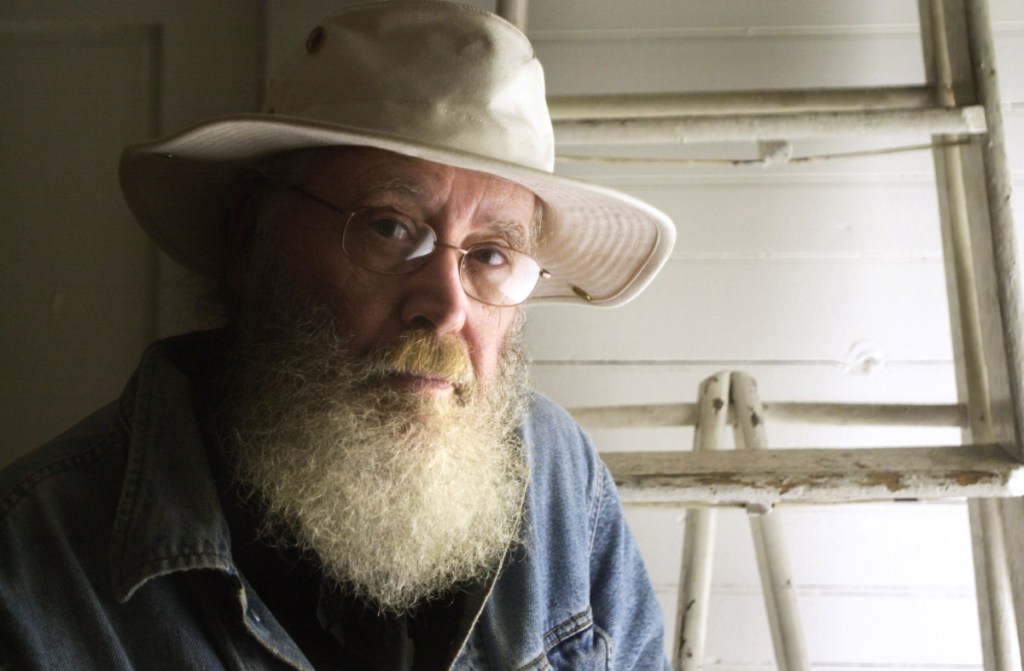
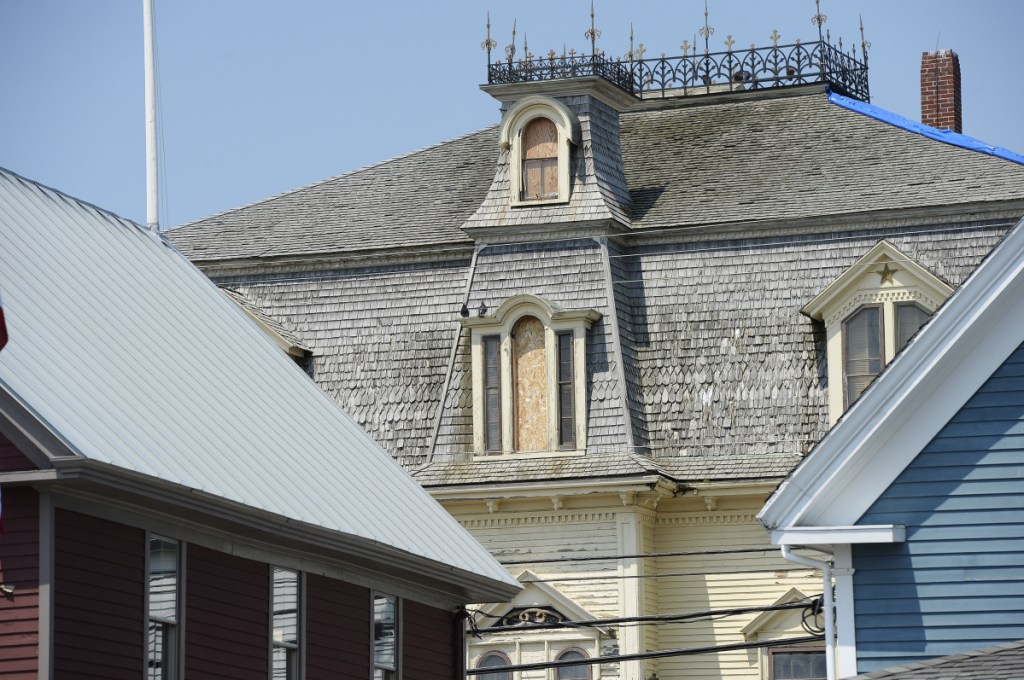
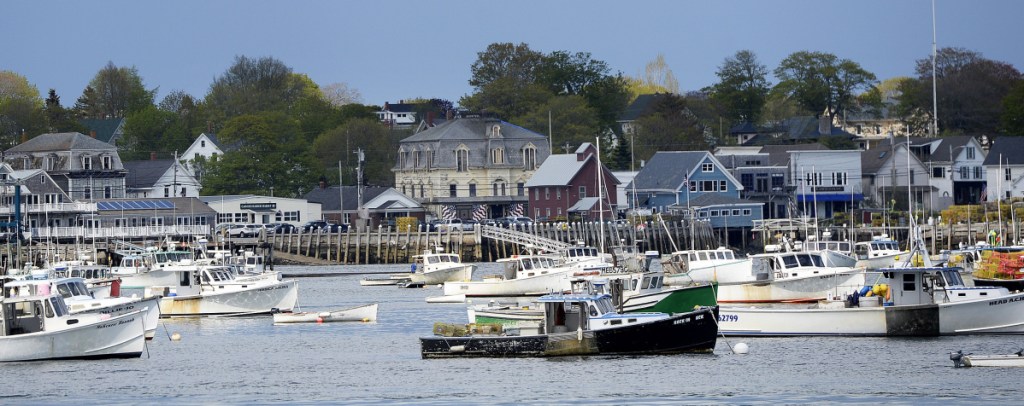
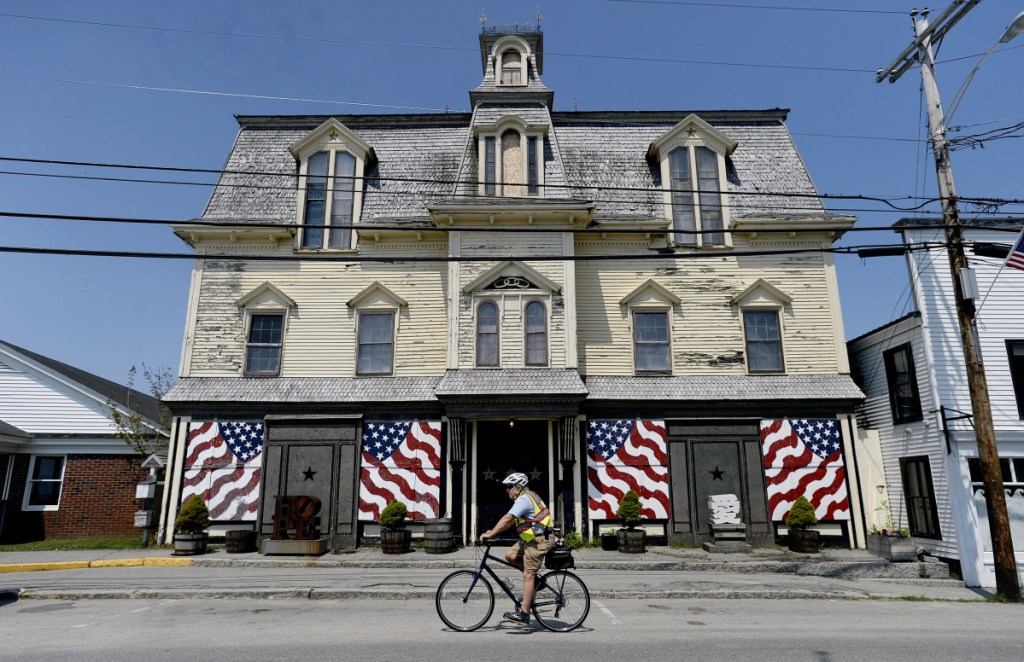
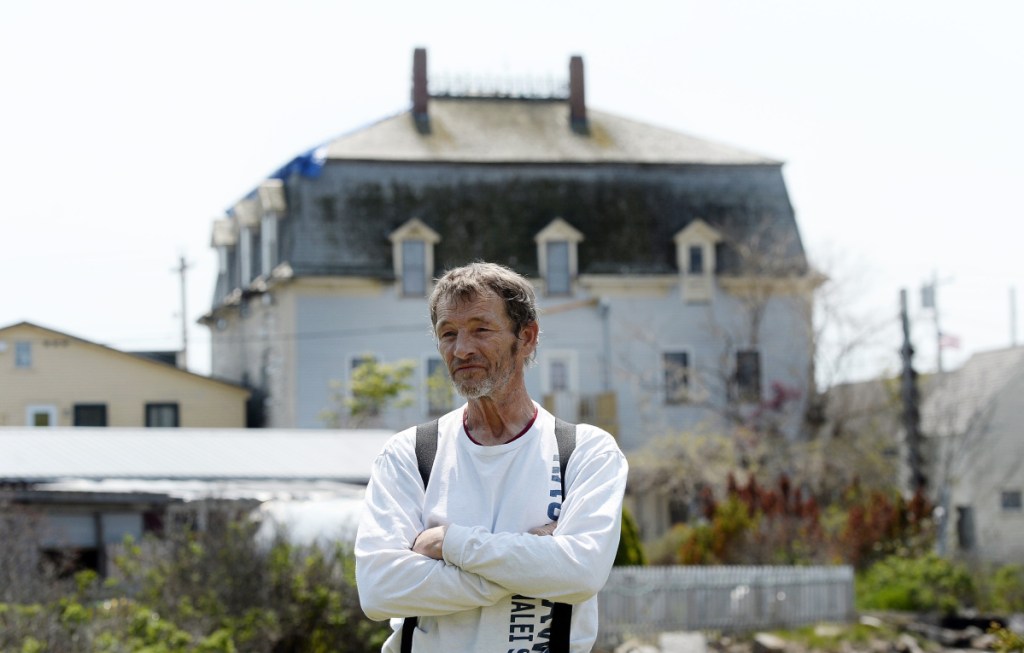
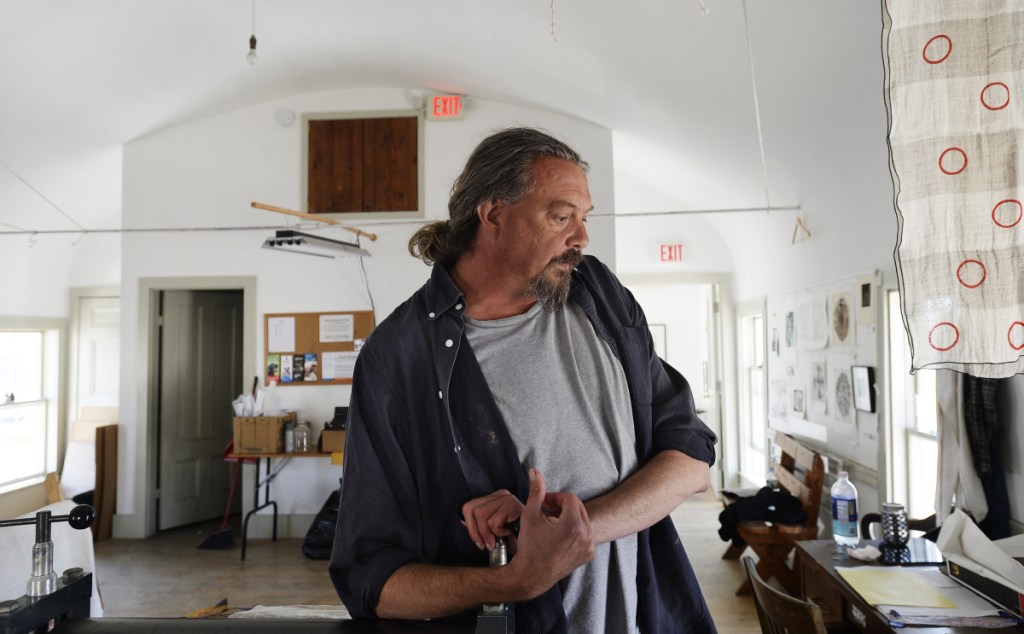
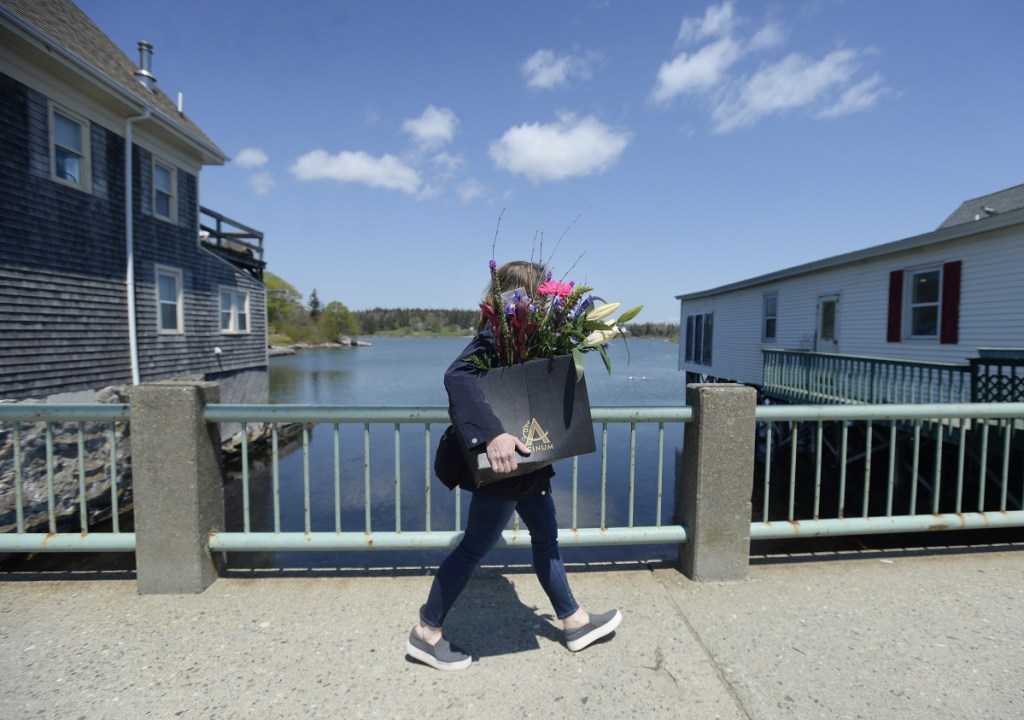
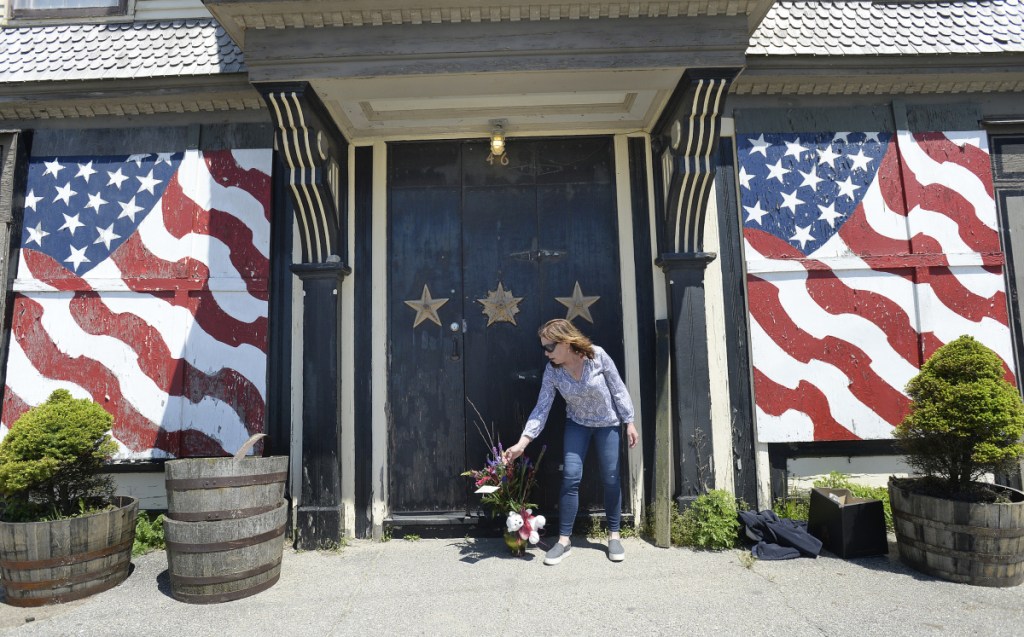
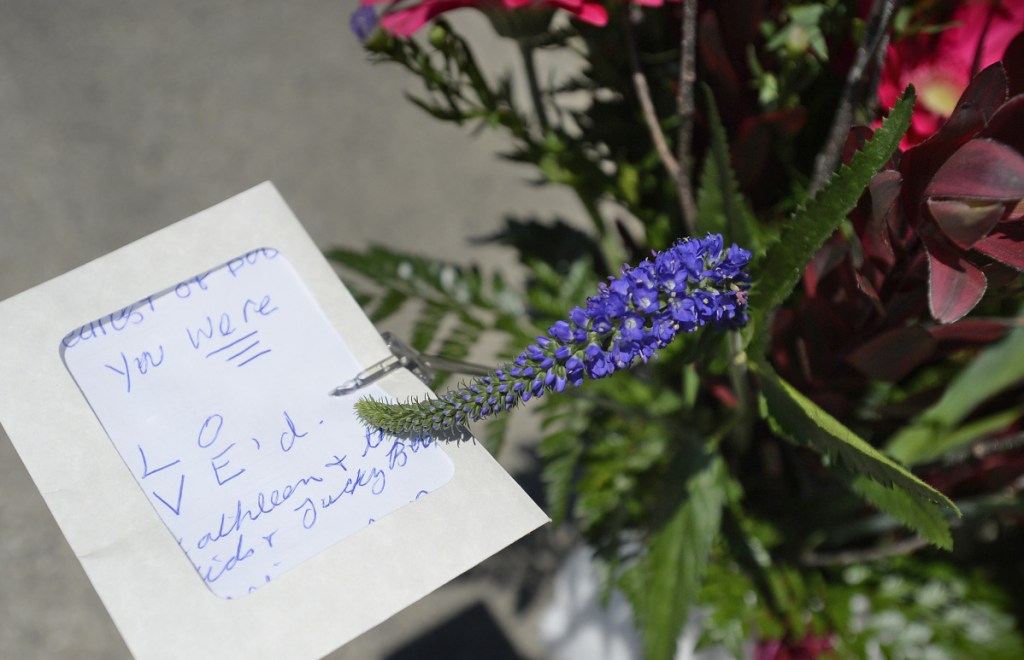
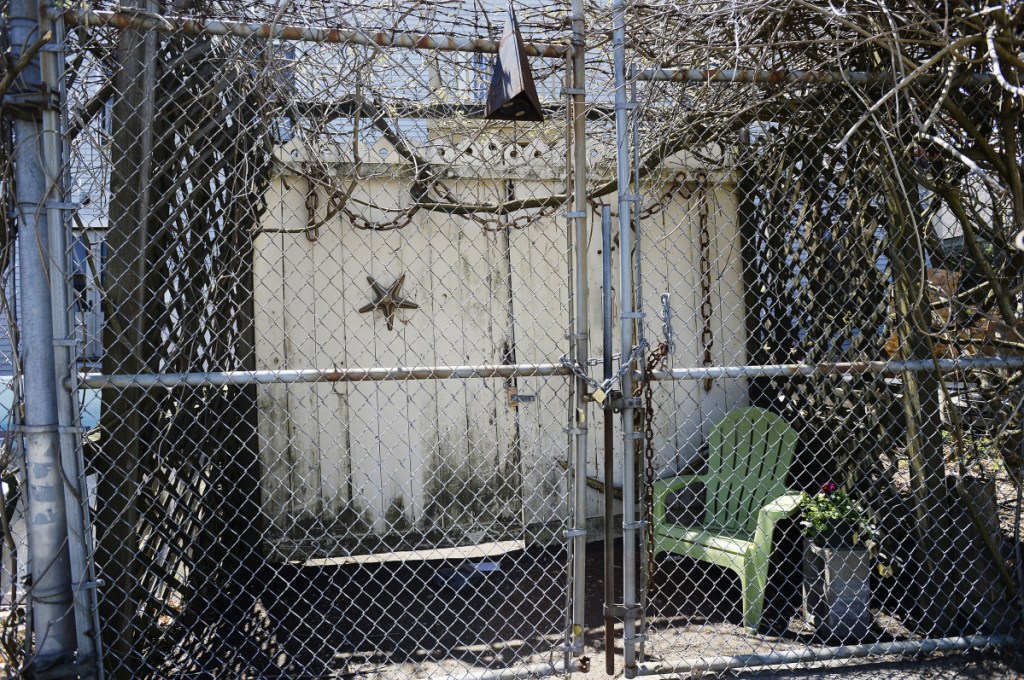

Success. Please wait for the page to reload. If the page does not reload within 5 seconds, please refresh the page.
Enter your email and password to access comments.
Hi, to comment on stories you must . This profile is in addition to your subscription and website login.
Already have a commenting profile? .
Invalid username/password.
Please check your email to confirm and complete your registration.
Only subscribers are eligible to post comments. Please subscribe or login first for digital access. Here’s why.
Use the form below to reset your password. When you've submitted your account email, we will send an email with a reset code.